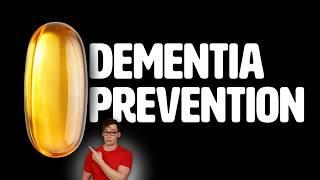AMA #59: Inflammation: its impact on aging and disease risk, and how to identify, prevent, and reduce it
Peter Attia
May 13, 2024
Mindsip insights from this episode:
Prioritize holistic methods over targeted drugs to manage inflammation
The risks of targeted drugs suggest that holistic approaches like managing diet, exercise, sleep, and stress are probably a better way to control inflammation.
Weigh risks of targeted anti-inflammatory drugs against benefits
The CANTOS trial showed a drug (canakinumab) targeting a specific inflammatory pathway reduced cardiac events but also increased the risk of serious and fatal infections.
Reduce inflammation to lower mortality risk
In a large study, individuals with very high C-reactive protein (CRP) had a 171% increased risk of death from any cause compared to those with low CRP.
Reduce inflammation to lower disease risk
There is a causal relationship between chronic inflammation and diseases like cancer and heart disease, meaning reducing inflammation should reduce disease risk.
Detect chronic inflammation through specific testing
Unlike the redness and swelling of acute inflammation, chronic inflammation is low-grade and often asymptomatic, making it difficult to detect without specific tests.
Address unseen fat to combat inflammation
Inflammation is primarily driven by visceral and ectopic fat around your organs, not the subcutaneous fat that you can see and pinch under the skin.
More from
Peter Attia
The impact of gratitude, serving others, embracing mortality, and living intentionally | Walter Green (#288 rebroadcast)
Thyroid function and hypothyroidism: why current diagnosis and treatment fall short for many, and how new approaches are transforming care | Antonio Bianco, M.D., Ph.D.
AMA #77: Dietary fiber and health outcomes: real benefits, overhyped claims, and practical applications
Women's sexual health: desire, arousal, and orgasms, navigating perimenopause, and enhancing satisfaction | Sally Greenwald, M.D., M.P.H.
Longevity 101: a foundational guide to Peter's frameworks for longevity, and understanding CVD, cancer, neurodegenerative disease, nutrition, exercise, sleep, and more (re-broadcast)
You also might be interested in
One Fat Can Prevent Dementia — If You Eat It Long-term
This Is Why Soda Spreads Cancer in your Body
Starving Cancer: The Hidden Power of Food, Fasting, and the Body’s Inner Terrain
Dementia Rates PLUNGED in Study of 1 Million People
The Fastest Way to Get Alzheimer’s (Most People Do This Daily) | Dr. Dale Bredesen











